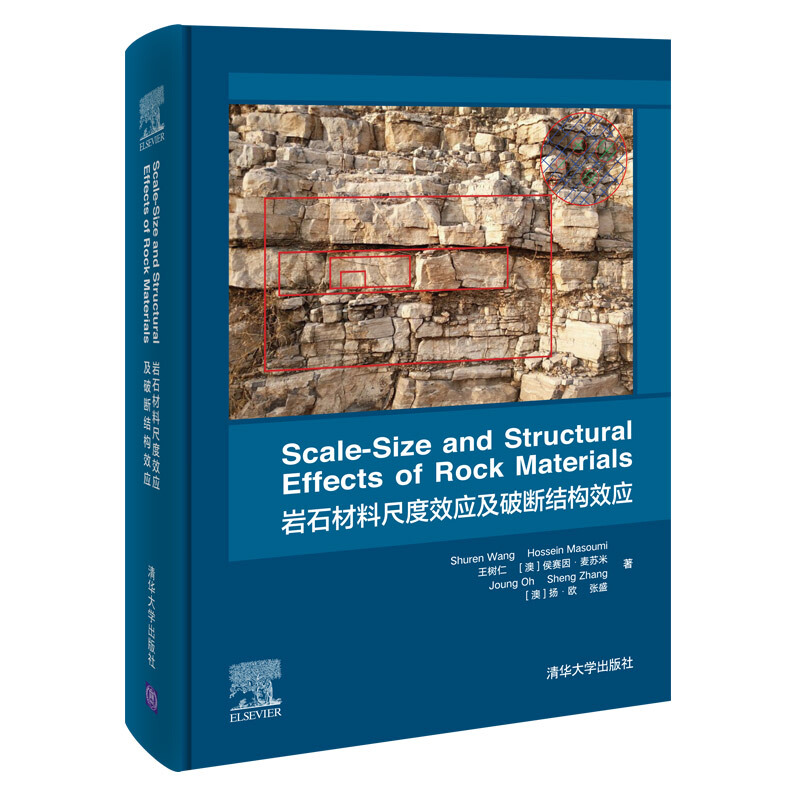
包邮岩石材料尺度效应及破断结构效应(Scale-Size and Structural Effects of Rock Ma

- ISBN:9787302559320
- 装帧:一般胶版纸
- 册数:暂无
- 重量:暂无
- 开本:其他
- 页数:664
- 出版时间:2020-08-01
- 条形码:9787302559320 ; 978-7-302-55932-0
本书特色
本书内容新颖、丰富、实用,可供从事岩石参数测试、岩体力学试验、岩土工程和地下工程实践的科研工作者、高校师生以及现场工程技术人员参考和借鉴本书总结了作者近年来关于岩石力学基础理论、试验方法以及创新技术和工程应用的*新研究成果。 本书总结了作者近年来关于岩石力学基础理论、试验方法以及创新技术和工程应用的*新研究成果。
内容简介
本书总结了作者近年来关于岩石力学基础理论、试验方法以及创新技术和工程应用的近期新研究成果。全书分岩石试验尺度效应、岩石断裂韧度确定、岩石节理尺度效应、微震监测及应用、工程岩体结构效应5章,主要阐述了靠前外关于岩石材料断裂过程的尺度效应和结构效应的试验技术、强度准则、微震监测及工程应用、工程岩体结构失稳机制及控制技术等内容,附有大量的图表和工程实例。本书内容丰富、新颖、实用,可为从事隧道工程、岩土工程、采矿工程以及岩石力学的科研工作者、高等院校师生以及现场工程技术人员提供参考和借鉴。
目录
作者简介
王树仁 博士,教授,主要从事岩土工程、岩石力学、采矿工程和数值模拟计算等方面的科研与教学工作。 主持及完成国家自然科学基金项目(51774112;51474188; 51074140; 51310105020)、河北省自然科学基金项目(E2014203012)、河北省科技支撑项目(072756183)和河南省科技厅国际合作项目(162102410027; 182102410060)等。基于上述研究,荣获国家科技进步二等奖1项,省部级二等奖5项,军队及省部级科技进步三等奖3项。荣获2015年澳大利亚政府资助奋进研究学者,现为河南省特聘教授和澳大利亚新南威尔士大学兼职教授。
-

中国古代建筑概说-大家小书
¥15.0¥28.0 -

人气小店设计解解剖书(八品)
¥14.9¥39.0 -

新建筑与流派-大家小书
¥14.7¥26.0 -

中国传统民俗文化:建筑系列:中国古代宫殿
¥20.7¥58.0 -

中国传统民俗文化:建筑系列:中国古代砖瓦
¥20.7¥58.0 -

中国传统民俗文化:建筑系列:中国古代楼阁
¥20.7¥58.0 -

建筑艺术
¥14.5¥39.0 -

大家小书:论园
¥20.5¥43.0 -

中国建筑文化遗产-1
¥33.2¥48.0 -

醉眼看建筑
¥10.4¥23.0 -

田野新思考察报告第3卷
¥19.9¥59.0 -

中国古代邮驿建筑
¥32.8¥39.0 -

古建园林技术总61-70期(七)
¥39.7¥90.0 -

古建园林技总91-100期(十)
¥39.7¥90.0 -

古建园林技术总81-90期(九)
¥39.7¥90.0 -

古建园林技术总101-110期(十一)
¥39.5¥110.0 -

小户型装修速查手册-顺风顺水
¥17.9¥49.8 -

国外后现代建筑
¥13.0¥50.0 -

中国园林史
¥13.5¥36.0 -

中国古代基础建筑材料资料汇编
¥31.8¥56.0









